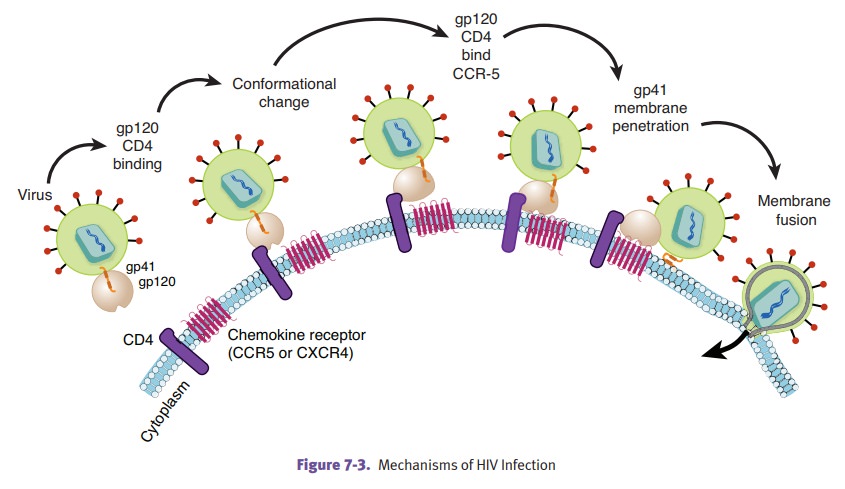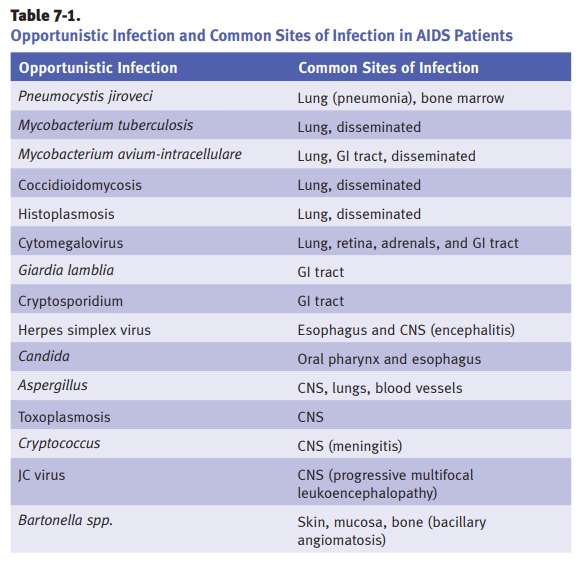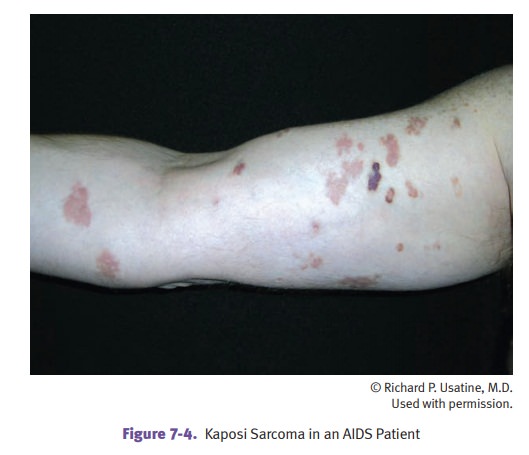Chapter: Pathology: Immunopathology
Acquired Immunodeficiency Syndrome (AIDS)
ACQUIRED IMMUNODEFICIENCY SYNDROME (AIDS)
AIDS
can be diagnosed when a person is HIV- positive and has CD4 count <200
cells/mL, or when a person is
HIV-positive and has an AIDS-defining disease. Males are affected more
frequently than females.
The
human
immunodeficiency virus (HIV) is an enveloped RNA retrovirus that
contains reverse transcriptase. HIV infects CD4-positive cells, including CD4+
T lymphocytes, all macrophages, lymph node follicular dendritic cells, and
Langer-hans cells. The mechanism of infection is by binding of CD4 by the viral
gp120, followed by entry into cell by fusion, which requires gp41 and
coreceptors CCR5 (β-chemokine receptor 5) and CXCR4 (α-chemokine receptor).
Transmission of HIV can
occur by many mechanisms, including sexual contact(most common mode, including
both homosexual transmission and an increasing rate of heterosexual transmission,
with important cofactors including herpes and syphilis infection); parenteral
transmission; IV drug use; blood transfusions (includ-ing those done in
hemophiliacs); accidental needle sticks in hospital workers; and vertical
transmission.

Diagnosis.The
CDC recommends initial testing with an antigen/antibody com-bination
immunoassay, followed by a confirmatory HIV-1/HIV-2 antibody differ-entiation
immunoassay. If the confirmatory test is negative, testing with an HIV-1
nucleic acid test is done. Treatment varies, and can include combination
antiretro-viral treatment, reverse transcriptase inhibitors, protease
inhibitors, and prophylaxis for opportunistic infections based on CD4 count.
The
clinical manifestations of HIV infection vary over time.
·
The acute phase is characterized by viremia with a reduction in CD4
count, mononucleosis-like viral symptoms and lymphadenopathy, and
seroconver-sion.
·
The latent phase is characterized by asymptomatic or persistent
generalized lymphadenopathy with continued viral replication in the lymph nodes
and spleen, low level of virus in the blood, and minor opportunistic infections
including oral thrush (candidiasis) and herpes zoster. The average duration of
latent phase is 10 years.
·
Progression
to AIDS (third phase) occurs with reduction of CD4 count to<200
cells/mL, which is accompanied by reemergence of viremia and develop-ment of
AIDS-defining diseases, possibly to eventual death.


AIDS-Defining Diseases
Hairy
leukoplakia is an Epstein-Barr virus (EBV)–associated condition due to
infec-tion of squamous cells. White plaques are present on the tongue.
Kaposi
sarcoma is the most common neoplasm in AIDS patients.

Non-Hodgkin
lymphomas tend to be high-grade B-cell lymphomas; extranodal CNS lymphomas are
common.
Other
AIDS-defining diseases include cervical cancer, HIV-wasting syndrome, AIDS
nephropathy, and AIDS dementia complex.
Related Topics